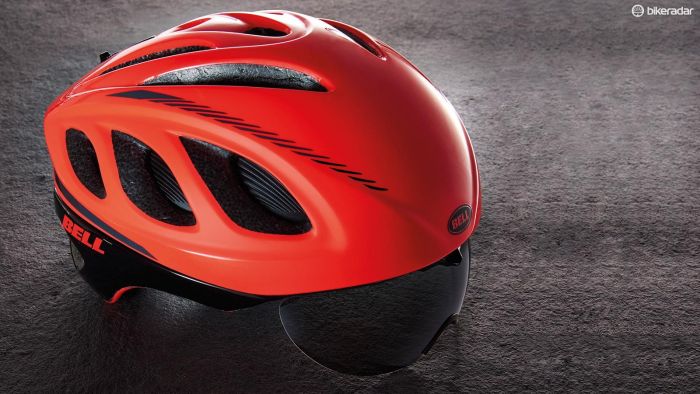You can trust Cyclingnews

This article originally appeared on BikeRadar
Bell entered the aero road helmet market with a bang last summer, when Lars Boom won the epically challenging Tour de France stage over the wet cobblestones of northern France. On such a filthy day, a covered helmet looked to be the ideal choice for keeping the elements at bay, but we wanted to learn how it performed on any other day.
- Highs: Unique design, variable venting
- Lows: Limited front airflow, cradle position
Until now aero road helmets have been either smooth shells with minimal venting, or highly ventilated with aero considerations, but now there's a third type that has adjustable vents. One such lid, the Star Pro, features 15 vents, with a sliding switch on top at the rear to operate an internal plastic cover that closes 12 of them, with only the three rear vents remaining permanently open.
Our large sample weighs 287g, and has an internal cradle that is less adjustable then some, tightened with a rear rotary dial. The cradle is anchored at each temple by a plastic plug, which can be uncomfortable on larger heads.
From the front, the Bell presents an almost completely smooth shell to the wind, with all the vents arranged along the sides, top and rear. This means that with the vents open, the main source of airflow to the brow comes from three internal channels that begin under the rim. The version shown here has a visor, but go for the cheaper option without and, because the helmet sits quite low on the head, your sunglasses can affect the already limited volume of air transmitted.
The vents are recessed, and when fully open provide reasonable cooling when facing forwards, but dropping your head gives a direct blast of air if you're overheating. With the vents closed, the only cooling comes via air flowing from the front internal channels to the open rear vents.
Although the vent covers operate reliably, their fit is less than exacting, and the helmet generally underwhelmed us with its quality. We can neither verify nor dispute claims made for the Star Pro's aerodynamics, but in comfort terms, it's good on cooler days or at lower intensity. If you heat up fast, you'll need to choose between aero and cooling.